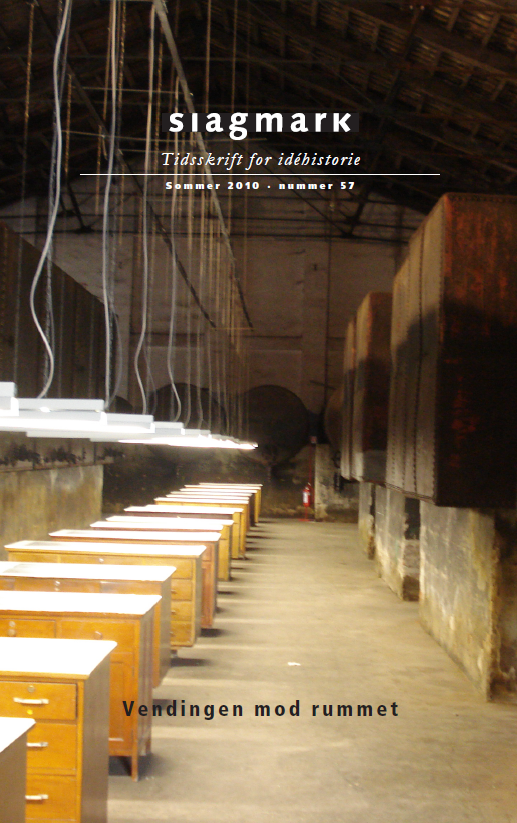Udviklingen af rumopfattelsen 1600-2000, filosofihistoriske hovedtræk
DOI:
https://doi.org/10.7146/sl.v0i57.104670Nøgleord:
space, schematism, emotional models, Kant, WittgensteinResumé
The paper tries to give a survey of the historical development of physical and philosophical ideas of space after Descartes and Newton. A special focal point is Kant´s idea of a schematism and three kinds of afterglows of this idea; the notionof a work of art, the notion of scientific model, and finally the unity of action and
space in phenomenology. The paper suggests that works within the recent spatial
turn perhaps have failed to rethink the unity between material, social, and personal
relations, and that an assessment of the later Wittgenstein´s micro-phenomenology
could pave the way for a stronger “second spatial turn”.
Downloads
Publiceret
Citation/Eksport
Nummer
Sektion
Licens
Ophavsretten til artiklerne i Slagmark deles mellem forfatter og Forlaget Slagmark.
Artikler og tekstmateriale publiceret i Slagmark må citeres, downloades og videresendes for ikke-kommerciel brug, under forudsætning af normal akademisk reference til forfatter(e) samt tidsskrift, årgang, nummer og sider.
Brug og distribution af tekstmateriale både i form af papirkopier og elektroniske kopier, til undervisningsbrug på uddannelsesinstitutioner og intern brug er tilladt efter aftale med Copydan Tekst & Node. Brugen skal ske inden for aftalens rammer.
Artikler og tekster må kun genudgives med eksplicit tilladelse fra forfatter(e) og tidsskriftet med en anerkendelse af værkets første publicering i nærværende tidsskrift.





